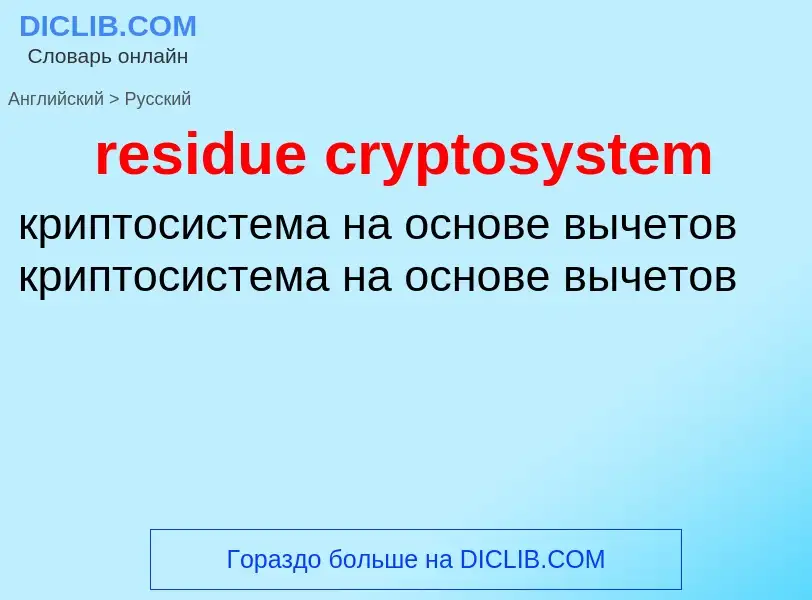Μετάφραση και ανάλυση λέξεων από την τεχνητή νοημοσύνη ChatGPT
Σε αυτήν τη σελίδα μπορείτε να λάβετε μια λεπτομερή ανάλυση μιας λέξης ή μιας φράσης, η οποία δημιουργήθηκε χρησιμοποιώντας το ChatGPT, την καλύτερη τεχνολογία τεχνητής νοημοσύνης μέχρι σήμερα:
- πώς χρησιμοποιείται η λέξη
- συχνότητα χρήσης
- χρησιμοποιείται πιο συχνά στον προφορικό ή γραπτό λόγο
- επιλογές μετάφρασης λέξεων
- παραδείγματα χρήσης (πολλές φράσεις με μετάφραση)
- ετυμολογία
residue cryptosystem - translation to ρωσικά
математика
формула вычетов
математика
теорема о вычетах
Ορισμός
Βικιπαίδεια
The Damgård–Jurik cryptosystem is a generalization of the Paillier cryptosystem. It uses computations modulo where is an RSA modulus and a (positive) natural number. Paillier's scheme is the special case with . The order (Euler's totient function) of can be divided by . Moreover, can be written as the direct product of . is cyclic and of order , while is isomorphic to . For encryption, the message is transformed into the corresponding coset of the factor group and the security of the scheme relies on the difficulty of distinguishing random elements in different cosets of . It is semantically secure if it is hard to decide if two given elements are in the same coset. Like Paillier, the security of Damgård–Jurik can be proven under the decisional composite residuosity assumption.


